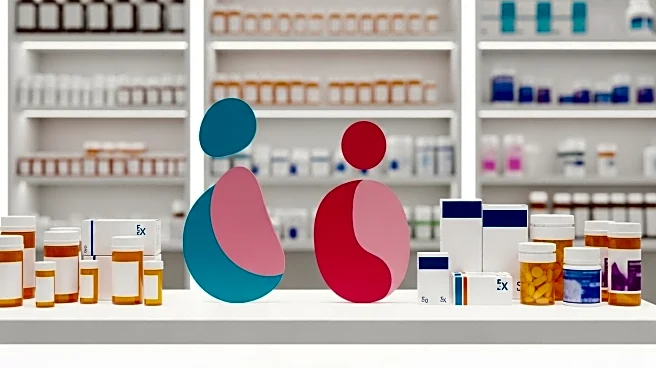What's Happening?
The food industry is adapting to the rise of GLP-1 drugs, such as Ozempic, Wegovy, and Mounjaro, which are known for reducing junk food cravings. These drugs are reshaping consumer eating habits, leading to a potential shift in the market for sweet foods. Despite the effectiveness of GLP-1 drugs in reducing cravings, ingredient suppliers are investing in nutrient-dense sugar reduction technologies, such as enzymes, to meet consumer demands for sweet foods. Dr. Joshua Sauer, co-founder and CEO of Zya, highlights the importance of sugar reduction technologies, noting that GLP-1 users still crave sweet foods. Zya has developed an enzyme that converts sugar into prebiotic fiber, aligning with the needs of GLP-1 users. Consumer research indicates that GLP-1 users prefer comforting sweet flavors like strawberry, chocolate, caramel, and vanilla, suggesting that the demand for sweet foods remains strong.
Why It's Important?
The rise of GLP-1 drugs presents a significant challenge and opportunity for the food industry. While these drugs reduce cravings for junk food, they do not eliminate the desire for sweet foods, prompting ingredient suppliers to innovate in sugar reduction technologies. This shift underscores the importance of developing nutrient-dense sweet foods that cater to the evolving preferences of consumers, including those on GLP-1 drugs. The industry must adapt to these changes by rethinking formulations and investing in research to meet consumer demands for better nutrition. The continued interest in sugar reduction technologies highlights the need for the food industry to balance sweetness with nutritional value, ensuring that products remain appealing to consumers while promoting healthier eating habits.
What's Next?
The food industry is likely to see a fragmentation in the market, with an increasing number of sweetened and non-sweetened products tailored to different consumer needs. Companies like Zya and Elo Life Systems are developing innovative solutions, such as natural sweeteners and enzymes, to address the demand for nutrient-dense sweet foods. As the industry navigates the impact of GLP-1 drugs, manufacturers may need to rethink their product formulations and invest in research to align with consumer preferences. The rise of GLP-1 drugs serves as a signal for the industry to innovate and meet consumers where they are, desiring sweetness but also demanding better nutrition.
Beyond the Headlines
The impact of GLP-1 drugs on the food industry extends beyond immediate consumer preferences. It raises ethical and cultural questions about the role of pharmaceuticals in shaping dietary habits and the responsibility of the food industry to promote healthier eating. The development of sugar reduction technologies also highlights the ongoing challenge of balancing consumer desires with public health goals. As the industry evolves, it must consider the long-term implications of these changes on consumer health and the environment, ensuring that innovations contribute to sustainable and ethical food production practices.











